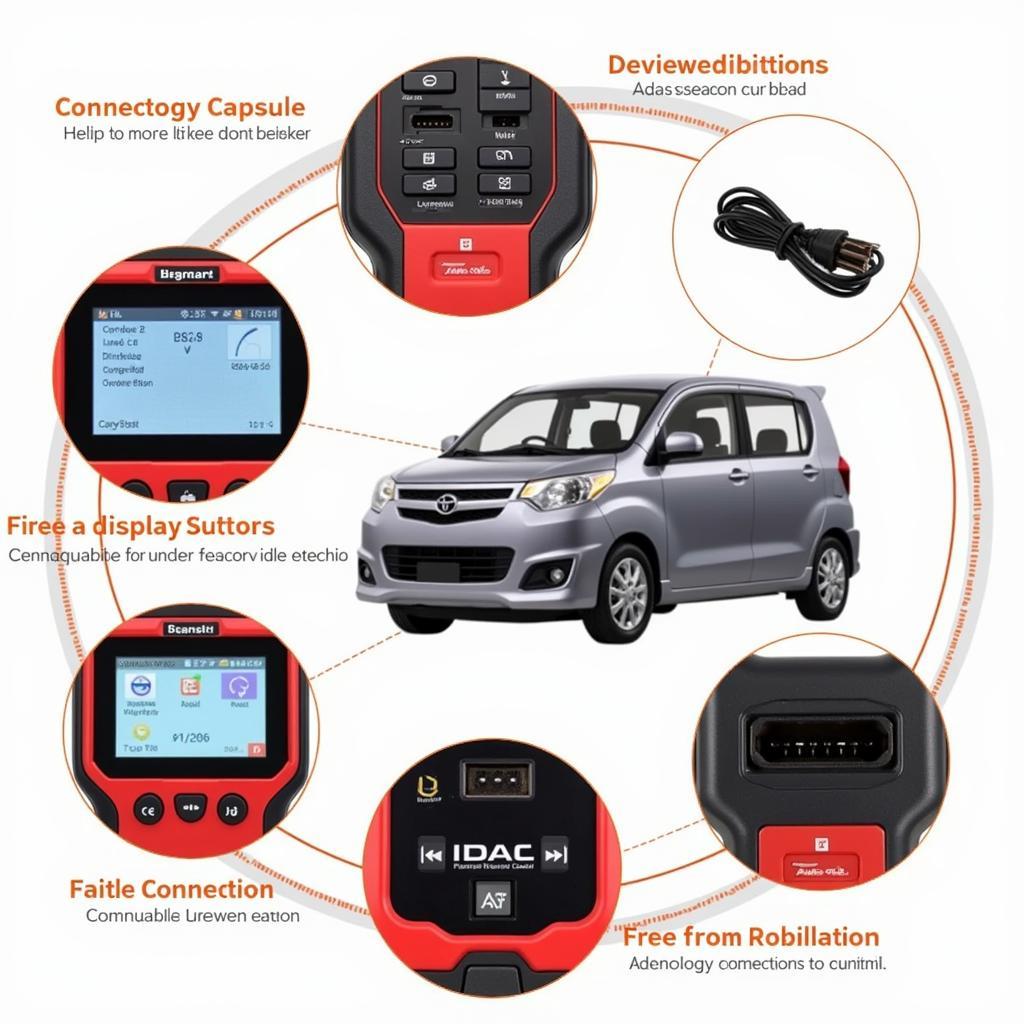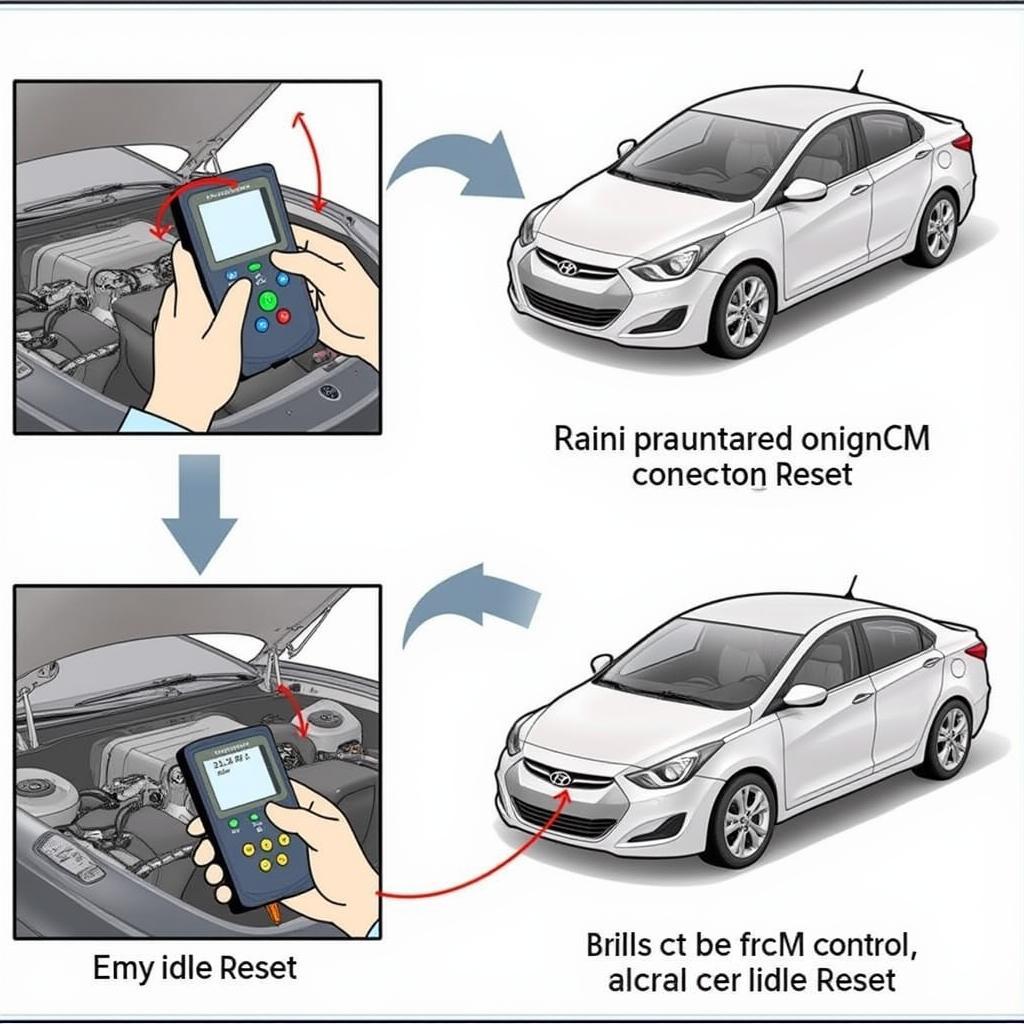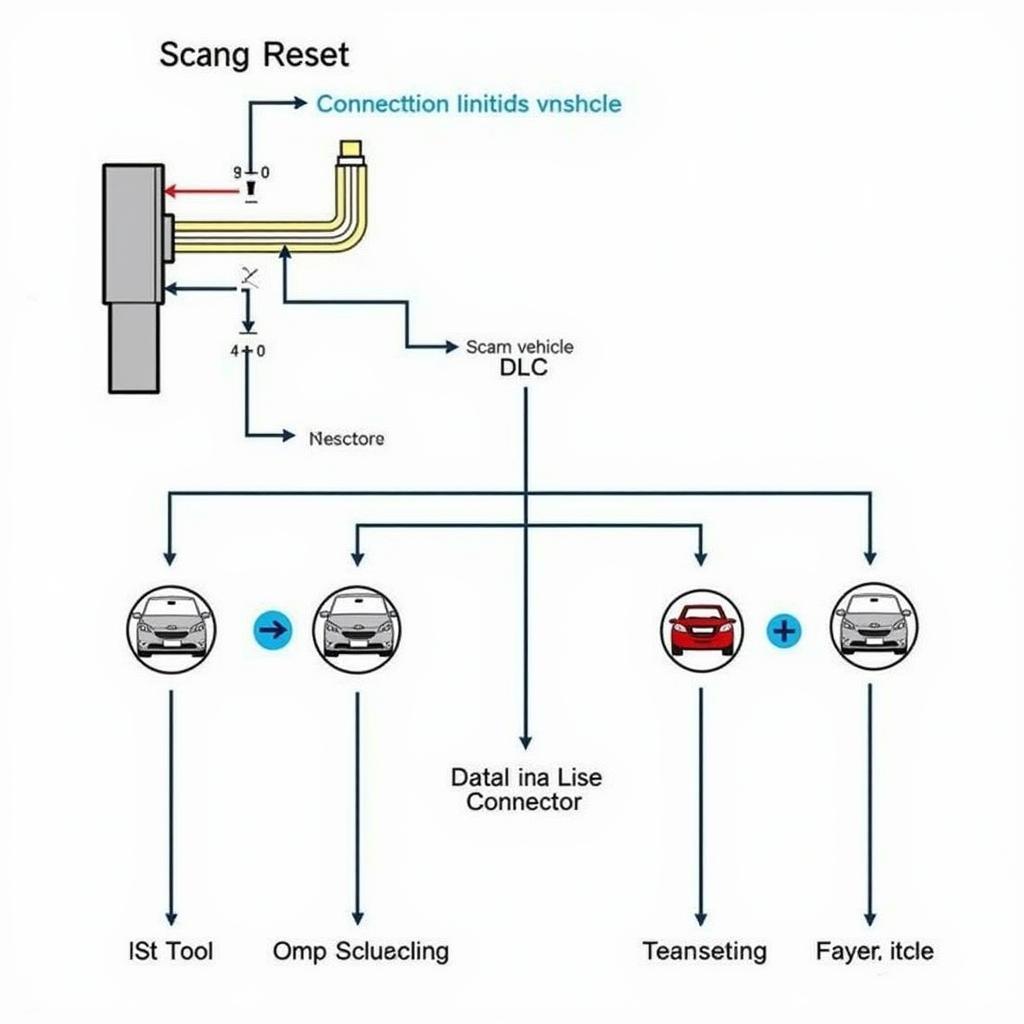An idle reset scan tool is a must-have for any car owner who wants to ensure their vehicle is running smoothly. It allows you to perform an idle reset, which can help to fix a variety of issues, including stalling, rough idling, and poor fuel economy. But what exactly is an idle reset, and how do you perform one?
In this article, we’ll delve into the world of idle reset scan tools, discussing their purpose, benefits, and how to use them effectively. We’ll also explore some common troubleshooting tips and provide insights into the importance of choosing the right scan tool for your needs.
What is an Idle Reset and Why is it Important?
An idle reset is a process that involves resetting the computer in your car’s engine control module (ECM) to its default settings. This can be necessary in situations where the ECM has become “stuck” or has learned incorrect idle values.
Think of it as giving your car’s computer a fresh start. By resetting the ECM, you essentially erase any previously learned values and allow the computer to re-learn optimal idle parameters from scratch. This can be especially helpful after:
- Replacing a sensor: If you’ve replaced a sensor related to engine performance, such as a throttle position sensor or a mass airflow sensor, an idle reset can help ensure the ECM adapts properly to the new sensor.
- Performing engine work: Any major engine work, like replacing spark plugs or injectors, can disrupt the idle settings. A reset helps the ECM recalibrate itself to the new conditions.
- Experiencing idle problems: If your car is experiencing erratic idling, stalling, or other issues related to the idle speed, a reset can potentially solve the problem.
Benefits of Using an Idle Reset Scan Tool
There are several key benefits to using an idle reset scan tool:
- Improved engine performance: By resetting the ECM, you can help your engine run smoother, improve fuel efficiency, and potentially increase horsepower.
- Problem diagnosis: An idle reset can help identify underlying issues that may be causing your vehicle to idle poorly.
- Convenience: It’s a relatively quick and easy process that can be done yourself, saving you time and money compared to taking your car to a mechanic.
How to Use an Idle Reset Scan Tool
Using an idle reset scan tool is usually a straightforward process. Here’s a general guide:
- Connect the scan tool: Connect the scan tool to your car’s data link connector (DLC), typically located under the dashboard.
- Select “Idle Reset” or “Reset ECM”: The specific menu options may vary depending on the scan tool, but most will have an option to reset the ECM.
- Follow the prompts: The scan tool will guide you through the process. This may involve turning the ignition on and off or starting the engine for a short period.
- Disconnect the scan tool: Once the reset is complete, disconnect the scan tool from the DLC.
Tip: Always refer to your scan tool’s user manual for specific instructions.
Finding the Right Idle Reset Scan Tool
Not all scan tools are created equal. When choosing an idle reset scan tool, consider the following factors:
- Compatibility: Ensure the scan tool is compatible with your vehicle’s make and model. Some scan tools are specific to certain car brands or models.
- Features: Beyond idle reset, some scan tools offer additional features like reading and clearing diagnostic trouble codes (DTCs), live data monitoring, and advanced diagnostics.
- Ease of use: Choose a tool that is easy to understand and navigate, especially if you’re new to using scan tools.
- Price: Prices vary depending on the features and brand. Consider your budget and what features are most important to you.
FAQs
What is a normal idle speed for a car?
A normal idle speed typically ranges from 600 to 900 revolutions per minute (RPM). However, this can vary depending on the make and model of your car.
How often should I perform an idle reset?
There’s no set schedule for performing an idle reset. It’s generally recommended to reset the ECM after replacing sensors, performing major engine work, or experiencing idle issues.
Can an idle reset damage my car?
No, an idle reset is a safe process and will not damage your car.
Can I perform an idle reset myself?
Yes, you can perform an idle reset yourself using an idle reset scan tool. However, if you are not comfortable with this, it’s best to take your car to a mechanic.
When to Contact a Mechanic
While an idle reset can often address basic idle issues, there are times when it’s best to seek professional help:
- Persistent problems: If your vehicle continues to idle poorly after an idle reset, there may be a more serious underlying issue that requires a mechanic’s diagnosis.
- Engine warning lights: If your check engine light comes on, it’s essential to have your car inspected by a mechanic to determine the cause.
- Unusual sounds or symptoms: If you notice any unusual sounds or symptoms, such as rattling, knocking, or smoke, it’s best to get your car checked out.
Conclusion
An idle reset scan tool is a valuable tool for any car owner. It can help you improve engine performance, diagnose problems, and ensure your vehicle is running smoothly. By following the steps outlined in this guide, you can easily perform an idle reset and potentially solve a range of common idle issues. However, remember that if problems persist, it’s always advisable to consult a professional mechanic.
 Idle Reset Scan Tool: How to Perform a Reset and Diagnose Your Vehicle
Idle Reset Scan Tool: How to Perform a Reset and Diagnose Your Vehicle
 Car Idle Reset Process
Car Idle Reset Process
 Idle Reset Tool Compatibility
Idle Reset Tool Compatibility
If you need any further assistance with idle reset scan tools or have questions about your car’s performance, feel free to reach out to our team of experts. We’re available 24/7 to provide guidance and support. You can contact us via WhatsApp: +1(641)206-8880, Email: [email protected], or visit us at 276 Reock St, City of Orange, NJ 07050, United States.


